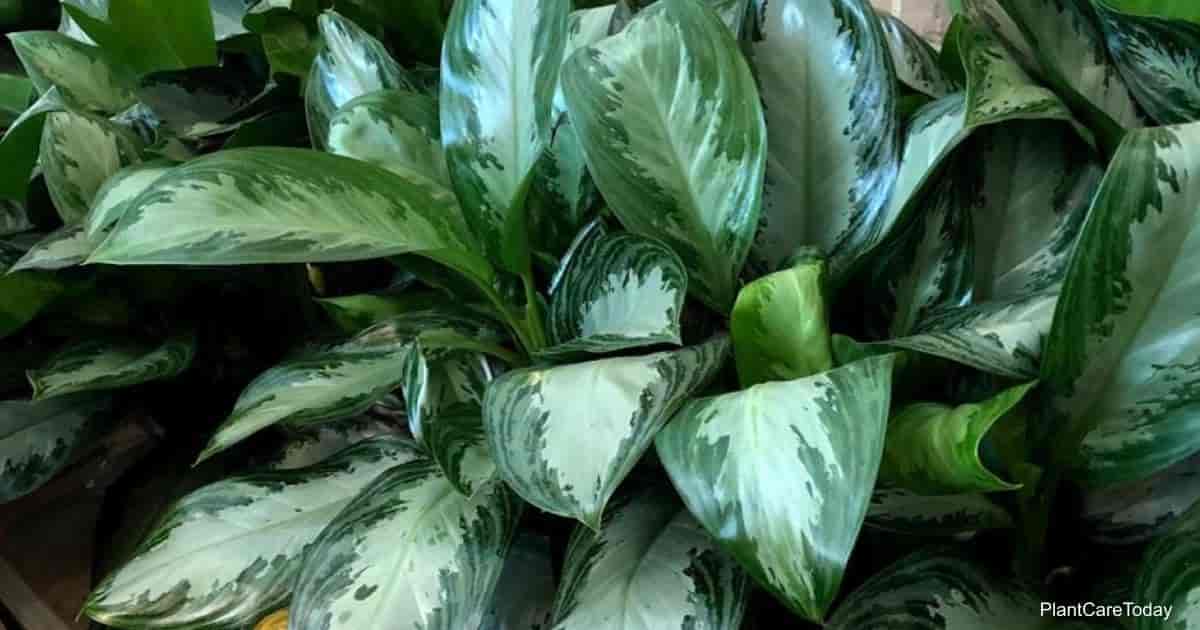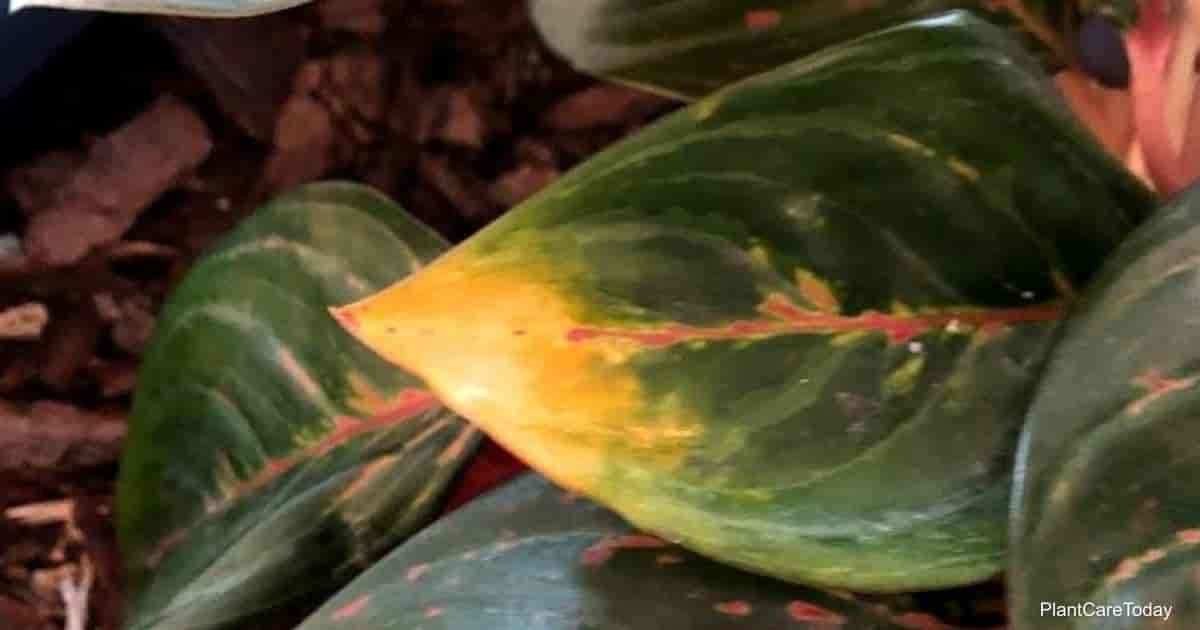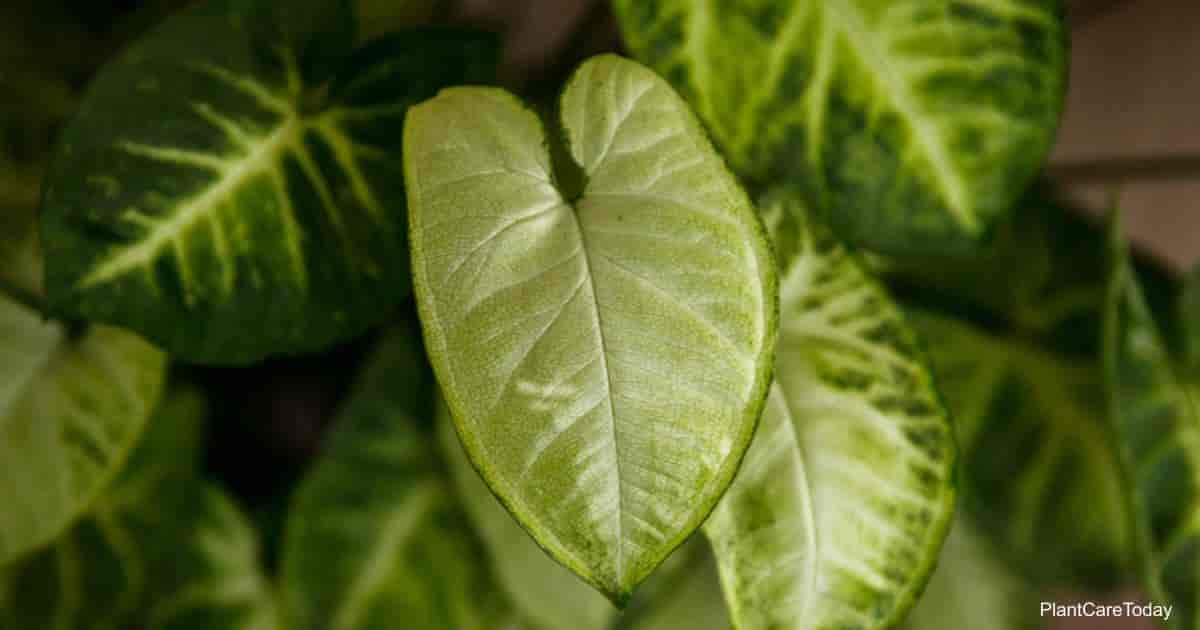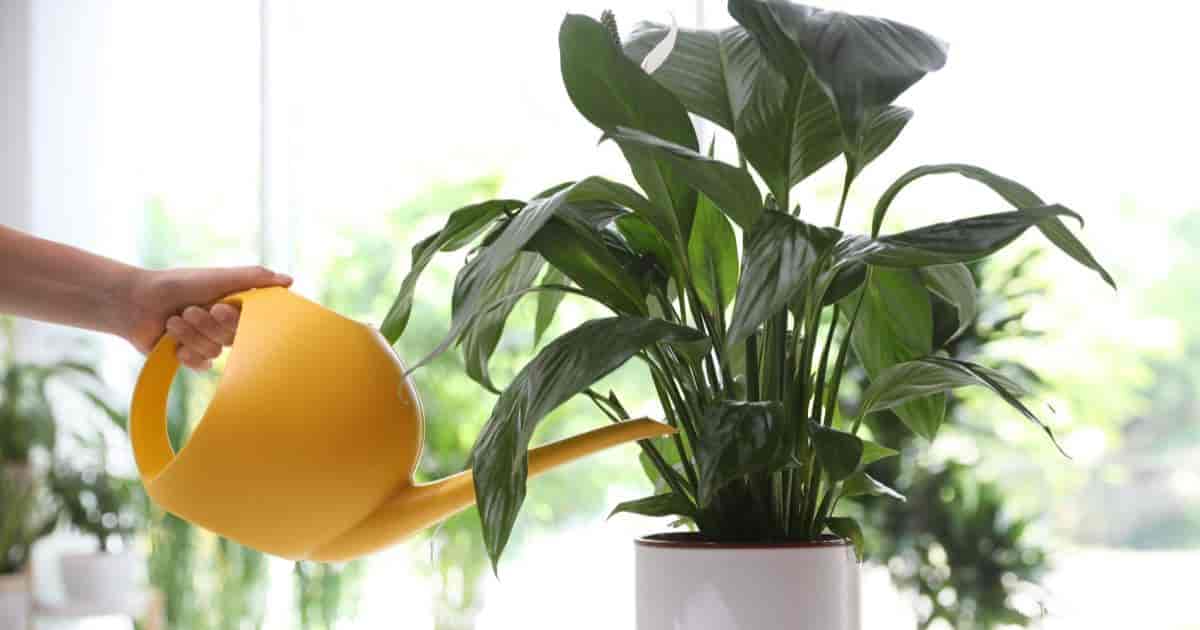The Aglaonema Silver Bay plant is a perennial member of the Araceae family and is one of the newer hybrid Aglaonema varieties developed by Doctor Jake Henny of the University of Florida, Apopka Foliage Research Station.
Aglaonema Silver Bay (ag-lay-oh-NEE-muh) is also called:
- Silver Bay Chinese Evergreen
- Silver Chinese Evergreen
Aglaonema Silver Bay Care
- Size & Growth
This robust plant can grow to about 3′ feet high with an equal spread when kept as a potted plant.
Planted in the landscape, Silver Bay plants may attain a height and spread of about 4′ feet.
The stems of this plant are relatively short, and the leaves are lance-shaped and unfurl in an interesting manner.
The pretty variegated leaves and the stems are glossy and exhibit attractive silver, light green, and dark green combinations.
Each leaf blade may grow to a width of two or three inches and 8″ -10″ inches long.
The inner part of individual leaves is typically an interesting shade of solid gray. The outer edges of the leaves are marked with alternating gray and green patches.
- Flowering & Fragrance
This plant occasionally blooms, producing green and white spathes and spadices.
If your plant does bloom, you might want to consider cutting them off, as they suck energy from the rest of the plant. If left in place, the flowers may transition into clusters of red berries.
- Light & Temperature
Silver Bay makes an excellent houseplant because it does very well in medium to bright indirect sunlight.
These hardy plants can even do well in a reasonably low-light setting. They also tend to thrive in fluorescent lighting.
Chinese Evergreen is winter hardy in USDA hardiness zones 9 through 11.
The plant does well at temperatures ranging from 60°F to 70°F. However, it’s wise to protect the plant from sudden temperature changes and cold and hot drafts.
- Watering & Feeding
Don’t allow the plants’ soil to dry out entirely, but do allow the top couple of inches to dry before watering thoroughly.
As with most plants, if you keep the soil too wet, you’ll have root and leaf rot problems.
Generally speaking, you can water Lucky Plant once every couple of weeks. Reduce watering during the wintertime.
Keep an eye on the plant, and if you notice that it’s beginning to droop, check the soil. It may be time to water.
Keep in mind that this tropical plant does need pretty high humidity. You can use a humidifier or pebble tray and/or mist the plant daily.
Chinese Evergreen does not tend to need much in the way of fertilizer.
If you repot annually with fresh soil, you should provide ample nutrition.
If you want to fertilize, one treatment of any water-soluble houseplant fertilizer, first thing in the springtime is plenty.
- Soil & Transplanting
Be sure to use a well-draining potting mix for your Chinese Evergreen.
Any good quality mix with a little bit of perlite added will do fine.
Repot Silver Bay annually or biannually in the springtime. Be careful not to over pot. Just choose a pot one size larger than the plant’s current home.
Remember that these plants need good drainage, so it is a pot that has plenty of drainage holes.
- Grooming & Maintenance
Keep your Chinese Evergreen looking fresh and lively by trimming away dead, damaged, or dying leaves.
You can pinch them off with your fingers or use a sharp, sterile cutting implement.
Note that it is normal for lower leaves to yellow and droop.
This is part of the plants’ natural growth process.
When this happens, simply trim them away. New leaves will appear shortly.
Looking for other types of aglaonema : AGLAONEMA
How To Propagate Aglaonema Silver Bay?
It is very easy to propagate Chinese Evergreen plants by dividing them when you repot.
You can also simply take stem cuttings and place them in damp soil to start new plants.
Aglaonema Silver Bay Pest or Disease Problems
These hardy plants are relatively pest resistant as long as you provide a healthy living environment.
Be sure to provide your plant with sharply draining soil, good ventilation, and the right amount of water and humidity.
In less than ideal conditions, problems with common houseplant pests, such as:
- Spider Mites
- Mealybugs
- Aphids
- Scale
…may ensue.
Overwatering and cool temperatures may result in root and stem rot.
Is The Plant Considered Toxic Or Poisonous To People, Kids, Pets?
Take care to keep pets and kids away from your Aglaonema plants.
The plant is toxic when ingested, and the sap can cause skin irritation.
Is The Plant Considered Invasive?
Though not formally listed as invasive, this vigorous, hardy plant could, in rare situations, become invasive in USDA hardiness zones 9-11 and other tropical or semi-tropical locations.
Take great care to keep this plant contained when planting in the landscape in this sort of setting.
Suggested Aglaonema Silver Bay Uses
This attractive foliage plant is big enough to create a real focal point indoors.
They are also hardy enough to live in almost any room in the house and may do especially well in a bathroom.
They also make excellent office or reception area plants in an office setting.
Credit : Gary Antosh (https://plantcaretoday.com/aglaonema-silver-bay.html)





